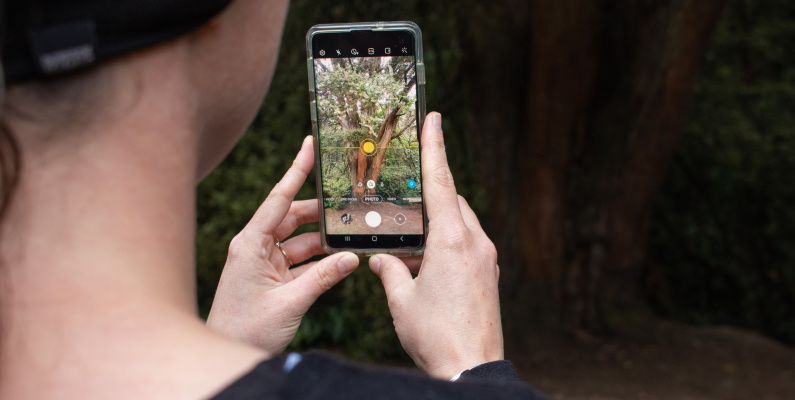
In my neighbourhood during the COVID-19 lockdown, I have seen more people out walking than I have ever seen on my usual dog-walking loops before. I have been overhearing some conversations between neighbours as I walk past and, for the first time, I am hearing chatter about the trees.
As a natural history curator, I find it incredibly comforting that people are making naturalist-type observations about the changes that are occurring as the seasons are changing and we are in now in autumn. But what I have not heard from the neighbourhood talk is the names of any of the plants that they have been discussing.
Plant blindness is a very real thing and common among people who live in urban areas. Plant blindness is caused by a disconnect from nature and the inability to notice natural things in one’s surroundings. Studies have shown that the number of plants that many people can name is incredibly low. The majority of the population in New Zealand is unlikely to be able to name our most iconic native plants when they see them, and is unable to separate native and introduced trees. To test this, ask your bubble buddies what do the leaves of the rimu or a tōtara look like? Can they describe the difference between mānuka and kānuka?
As a curator, I am in a privileged job where I am encouraged to wonder, to ask questions, and to find out ‘what is that?’. So, here I am encouraging you too to wonder, to ask, and to learn those plants that you have along your neighbourhood walk. Don’t worry it’s not hard, and there is an easy to use tool which you can all use to make finding out easy. I’ll admit, I am not very far down this botany journey myself with my zoology and marine science background, but I am learning.

Image: Tōtara leaves – Kane Fleury CC-BY 4.0
There are many skills that people have been learning while they are stuck in social isolation, creating all sorts of Instagram worthy crafts, baking, and feeding sourdough starters from natural yeasts in the air. So, why don’t you also use your exercise time to learn about your favourite trees, to ask, ‘what is that?’ yourself, and find out the answer?

Image: Rimu leaves – Kane Fleury CC-BY 4.0
I could recommend several good guide books, or heavy and beautiful coffee table books, but some of these are expensive, unavailable during this time, and can be dauntingly large. So to simplify your leap into the natural world, I’ll let you in on a secret: there’s an app for this.
Actually, there are many, many apps for this! PlantNet, PlantSnap, Picture this, and many more, but my favourite is called iNaturalist. It’s a simple app that is almost the social network of nature enthusiasts.
Now the way it works is that if you want to know what a tree, or insect, or fungi is, you just take a photo and upload it. It's as easy as that.
I asked Jon Sullivan who is on the board of the New Zealand chapter of iNaturalist why this app is good for reconnecting with nature. He tells me, “iNaturalist is an unbeatable tool for connecting anyone with nature. You've got New Zealand's and the world's nature experts in your hands ready to help you identify any species that you can photograph or record.” You've also got the facts and maps right there to learn more about species you find.”
If you have young children in your family, Jon tells me that “there's the app Seek by iNaturalist. Unlike the iNaturalist app, Seek doesn't share any observations with the world, and it keeps all activity safely locked in the phone. However, it still lets young children identify any species they can photograph, using the power of iNaturalist's machine-learning computer vision. They can collect badges as they find more things. It's a great tool for training young explorers.”
Like Pokémon Go except with real plants and animals!
There are many experts in their fields in New Zealand who use this app to collect observations of species in the wild, and it is these people who will help you with your first steps as a naturalist and identifying what you have photographed with your phone.
By asking questions of the world around you, you are helping to document all of Aotearoa's nature and how it's changing. This data is then used by biologists and ecologists to answer many questions about the distributions of plants and animals in New Zealand. Even new species have been discovered by non-experts using the app. It’s a win, win!
Otago Museum has been involved in two cases recently, one where someone found the first instance of the wingless Tasmanian solider fly (Boreoides tasmaniensis) occurring in Dunedin and another, Professor Steve Kerr, who at the time was a neuro toxicologist, discovered a new species of fly, caught specimens and described a new species of fly from Aramona, Scorpiurus aramoana.
Go on, give it a go, because you’ll only learn what those plants and animals are by asking questions.
Top Image: Using a free app to help identify trees – Kane Fleury CC-BY 4.0
